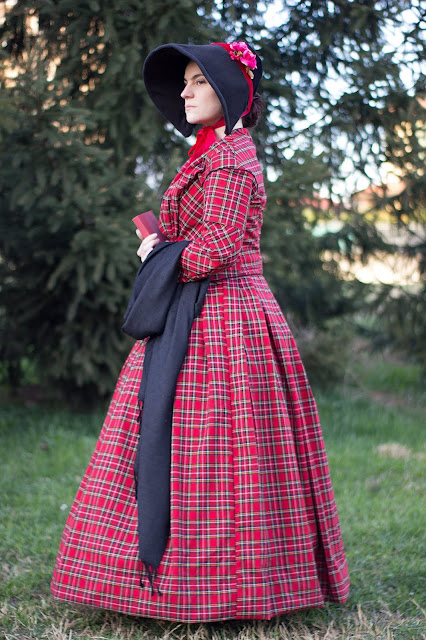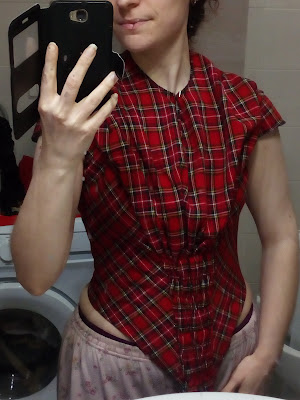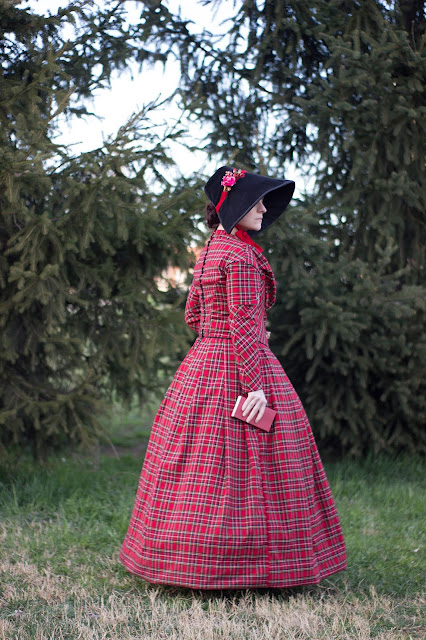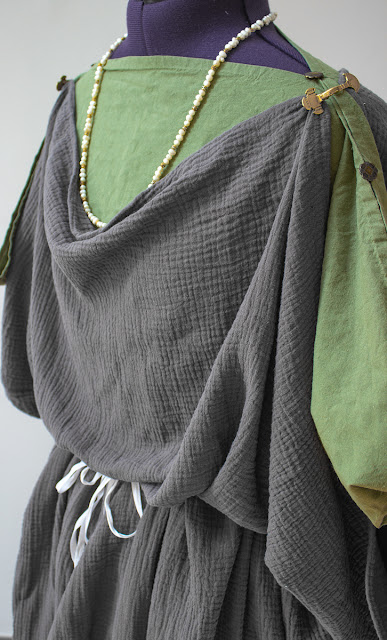A 1840s tartan dress and bonnet
First post of the year! Lot of time has passed since the last time but you know I only post when I finish a new outfit... This time I have to talk about two new dresses, both worn in Venice at the beginning of the month. Of course I will make two separate posts so you won't get confused. The first one is a project I dreamed about for so long. SO long. I have a huge passion for crinoline era dresses, especially late 1850s ones before elliptical skirts came into fashion, and fan front bodices. This also includes 1840s fashion with its less voluminous skirts, narrow sleeves and elongated waistlines. Ah, the gothic lady in me... ❥
I didn't know so much about fashion of that time so of course I did my research. Skirts of 1840s were supported by several petticoats (tucked, corded, plain, quilted...) instead of a hoop (not invented yet) so I immediately understood I couldn't cheat with the undergarments I already have, except for my chemise and corset. Before we continue I have to say I don't have to reenact with this dress so I used my classic Victorian corset instead of a corded one. Even the chemise is later but no one will see it...
Choosing the pattern for my dress has been hard; I have some lovely patterns in my Janet Arnold and Norah Waugh books but Waugh's one was closer to my aesthetic. I wanted something plain and simple being my first jump into the 40s but I dared with fabric. Tartan, here I come! I was out of time as usual so I didn't care about pattern matching.
The original pattern in Norah Waugh's book
Now, working on the pattern. I omitted the pointed cuffs and altered the bodice to be fan front, raised the neckline but the rest was left unaltered; skirts were just two rectangles of fabric pleated and open at the back with a placket. That's all. The bodice closes at the back. I added contrasting black piping in armhole, neckline and bodice bottom (did I say I preferred to make two separate pieces so that I can always make an evening bodice?). Neckline turned a little bit too large but I can fix it with a brooch.
The bottom edge of the fan front bodice is gathered with several raws of stitching secured to the lining.
The construction was really straighforward. Having made 1860s dresses before really helped. To make this dress you need to know basic rules of Victorian dressmaking such as flat lining and piping.
To complete the outfit I obviously needed a bonnet. I looooove making hats, despite being not a super skilled milliner. I used some velvet and cotton for lining I had in stash and some vintage millinery flowers as decoration.
And now the photos!
These were taken in Venice. Being Carnevale I used modern make up, a wrong purse and wrong gloves. I simply didn't care.
Some details of the bonnet
I'm so happy with this costume I'm already planning another one for summer, in a different fabric (plain this time).

















Commenti
Posta un commento